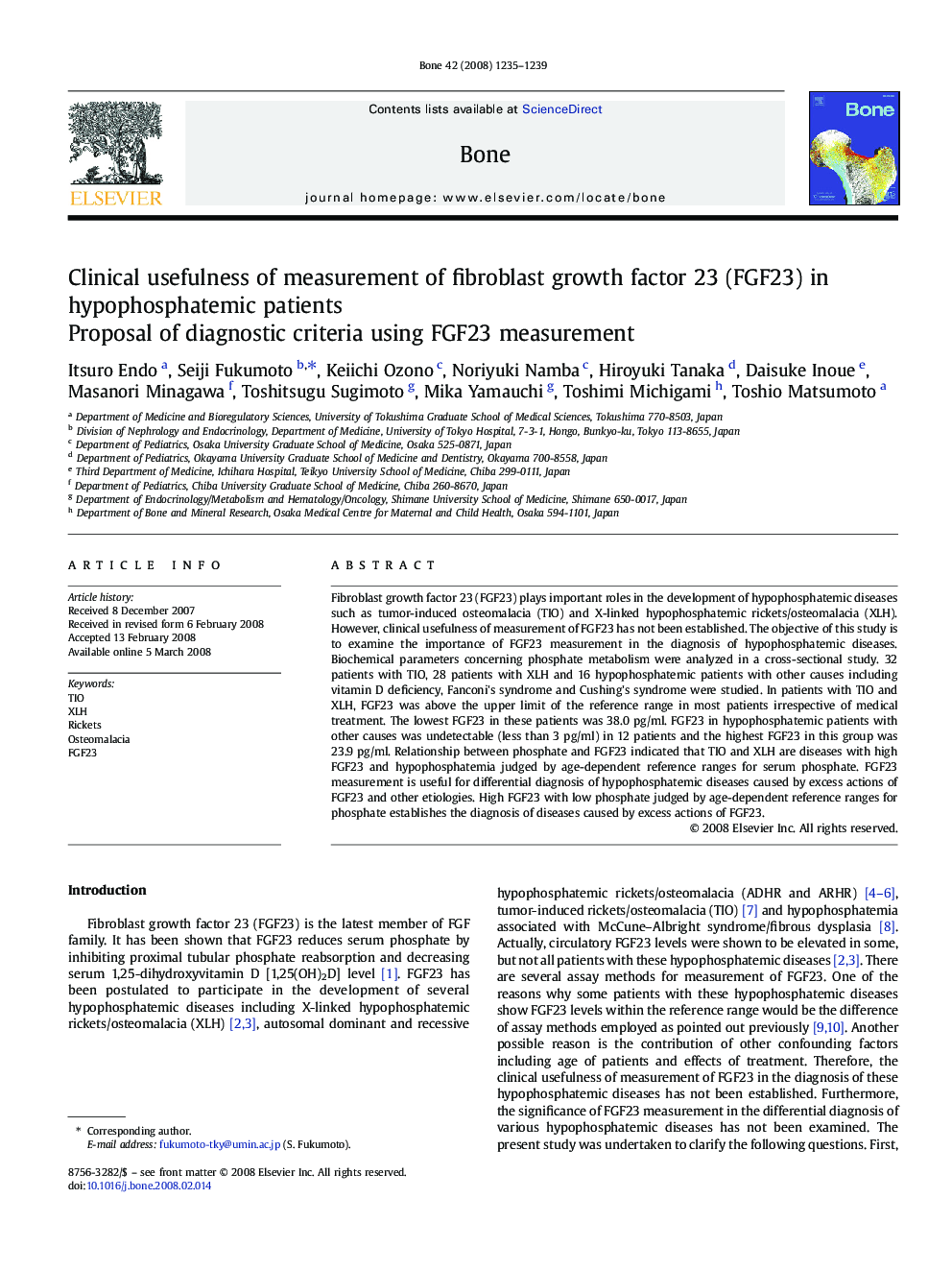| Article ID | Journal | Published Year | Pages | File Type |
|---|---|---|---|---|
| 2781296 | Bone | 2008 | 5 Pages |
Abstract
Fibroblast growth factor 23 (FGF23) plays important roles in the development of hypophosphatemic diseases such as tumor-induced osteomalacia (TIO) and X-linked hypophosphatemic rickets/osteomalacia (XLH). However, clinical usefulness of measurement of FGF23 has not been established. The objective of this study is to examine the importance of FGF23 measurement in the diagnosis of hypophosphatemic diseases. Biochemical parameters concerning phosphate metabolism were analyzed in a cross-sectional study. 32 patients with TIO, 28 patients with XLH and 16 hypophosphatemic patients with other causes including vitamin D deficiency, Fanconi's syndrome and Cushing's syndrome were studied. In patients with TIO and XLH, FGF23 was above the upper limit of the reference range in most patients irrespective of medical treatment. The lowest FGF23 in these patients was 38.0Â pg/ml. FGF23 in hypophosphatemic patients with other causes was undetectable (less than 3Â pg/ml) in 12 patients and the highest FGF23 in this group was 23.9Â pg/ml. Relationship between phosphate and FGF23 indicated that TIO and XLH are diseases with high FGF23 and hypophosphatemia judged by age-dependent reference ranges for serum phosphate. FGF23 measurement is useful for differential diagnosis of hypophosphatemic diseases caused by excess actions of FGF23 and other etiologies. High FGF23 with low phosphate judged by age-dependent reference ranges for phosphate establishes the diagnosis of diseases caused by excess actions of FGF23.
Keywords
Related Topics
Life Sciences
Biochemistry, Genetics and Molecular Biology
Developmental Biology
Authors
Itsuro Endo, Seiji Fukumoto, Keiichi Ozono, Noriyuki Namba, Hiroyuki Tanaka, Daisuke Inoue, Masanori Minagawa, Toshitsugu Sugimoto, Mika Yamauchi, Toshimi Michigami, Toshio Matsumoto,
